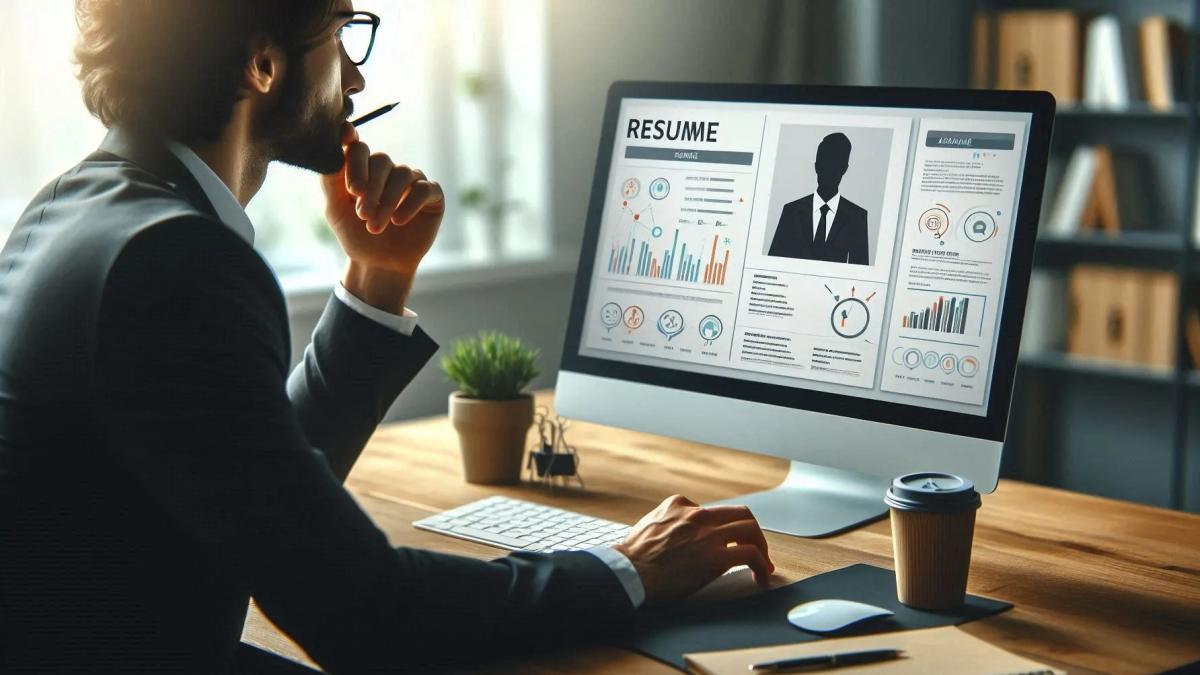
The Psychology of Resume Design: How Visual Layout Influences Recruiter Decisions
Oct 18, 2024. By Samona Sarin
Most job seekers focus on the content of their resume, emphasizing skills and experience, but few realize the visual design of their resume can have an equally important impact. Recruiters sift through dozens, sometimes hundreds, of resumes daily, and how your resume looks can influence their perception of you before they even read a word.
This blog dives into the psychology of resume design, exploring how layout, font choice, white space, and other visual elements can subtly guide recruiters’ decisions. It’s not just about making a resume "look good"—it's about optimizing it for readability and engagement, which can significantly improve your chances of standing out.
Why Visual Design Matters in Resume Writing
Resumes aren’t just pieces of paper—they’re marketing tools designed to showcase your value as a potential employee. Just like a well-designed product catches a consumer's eye, a thoughtfully designed resume can grab a recruiter’s attention.
Key reasons visual design matters:
- First Impressions: Research shows that recruiters take only 7.4 seconds to initially scan a resume. Design elements like layout and fonts help create that all-important first impression.
- Cognitive Load: A cluttered or poorly organized resume increases cognitive load, making it harder for recruiters to find the information they need quickly.
- Emotional Response: Certain colors, fonts, and layouts can trigger emotional reactions—either positive or negative—before the recruiter even processes the content.
The Importance of White Space
White space, or the empty areas of your resume, is crucial for readability and overall design balance. Overcrowded resumes are hard to read and process, while too much blank space can make a resume seem incomplete or underwhelming.
Psychological Impact:
- White space allows the recruiter’s eyes to rest and process information more easily. It makes the resume feel open and accessible.
- It also conveys professionalism and attention to detail, as a well-balanced resume shows care in how you present yourself.
Practical Tips:
- Avoid dense blocks of text. Break up your sections with ample spacing and bullet points.
- Use a font size that’s readable, ideally between 10 and 12 points, with clear headings and subheadings for easy navigation.
Font Choice and Readability
The typeface you use can evoke specific subconscious reactions from the reader. Serif fonts (e.g., Times New Roman) are often associated with tradition and reliability, while sans-serif fonts (e.g., Arial, Calibri) feel modern and clean.
Font Psychology:
- Serif fonts convey trust, reliability, and formality, which is why they are often used in legal and academic documents.
- Sans-serif fonts suggest modernity, openness, and simplicity, making them a better fit for industries like tech or design.
Choosing the Right Font:
- Stick to professional, readable fonts like Arial, Calibri, or Garamond. Avoid overly stylized fonts that can distract or be difficult to read.
- Font size and consistency are key. Maintain the same font style throughout your resume, using bold or italics sparingly for emphasis.
The Power of Color
While traditional resumes often stick to black-and-white, a subtle use of color can enhance your resume’s design without overwhelming it. Psychologically, color can influence mood and convey certain messages.
Psychological Influence of Color:
- Blue: Represents trust, loyalty, and calm—great for corporate or finance roles.
- Green: Suggests growth, harmony, and stability—ideal for sustainability or health-related jobs.
- Red: Conveys passion, energy, and urgency—but should be used sparingly, as too much red can feel aggressive.
Practical Color Use:
- Keep colors to a minimum—use them in headings or for accents like section dividers.
- Avoid using too many colors or bright, distracting hues. Stick to one or two accent colors that align with the industry you’re targeting.
Layout: Organizing Your Resume for Maximum Impact
The layout of your resume is critical in guiding the recruiter’s eye to the most important information. A well-structured layout will make it easy for a recruiter to scan your qualifications, while a poor layout will bury your key strengths.
Effective Layout Strategies:
- Use a F-pattern or Z-pattern layout. These patterns reflect how people naturally scan text—starting at the top left, moving horizontally, then down and across.
- Prioritize important information at the top. Include your most relevant experience or skills in the upper section of your resume.
- Use clear section headings to break up the content into digestible parts.
Conclusion: Design as a Strategic Tool
Incorporating psychological principles into your resume design doesn’t just make it look more polished—it makes it more effective in capturing and holding a recruiter’s attention. By using white space, readable fonts, appropriate colors, and a strategic layout, you can subtly influence how recruiters perceive your qualifications and professionalism.
Ultimately, resume design is more than aesthetics; it’s about communicating your value in a way that is easy to digest and appealing to the eye. If you’re unsure how to enhance the visual elements of your resume, working with a professional resume writing service can provide expert guidance in crafting a resume that looks as good as its content reads.





ADD COMMENTS
Your email address will not be published. Required fields are marked *